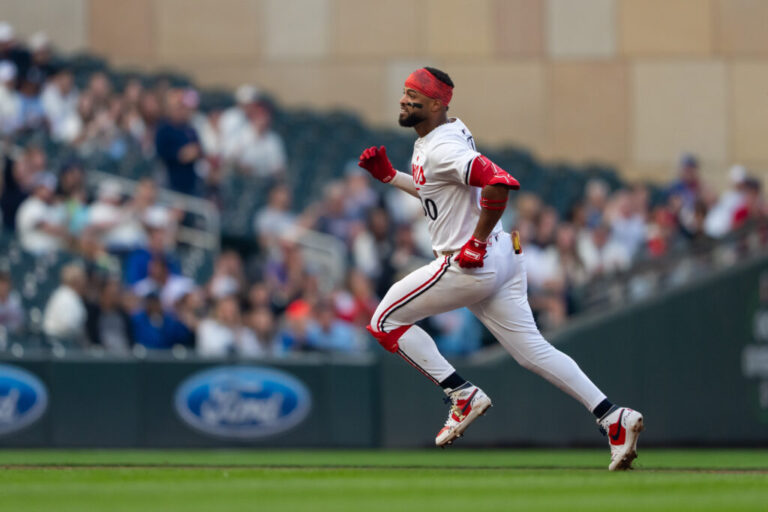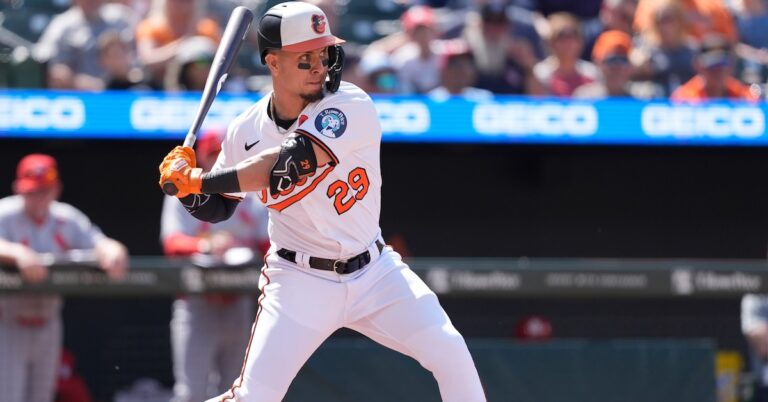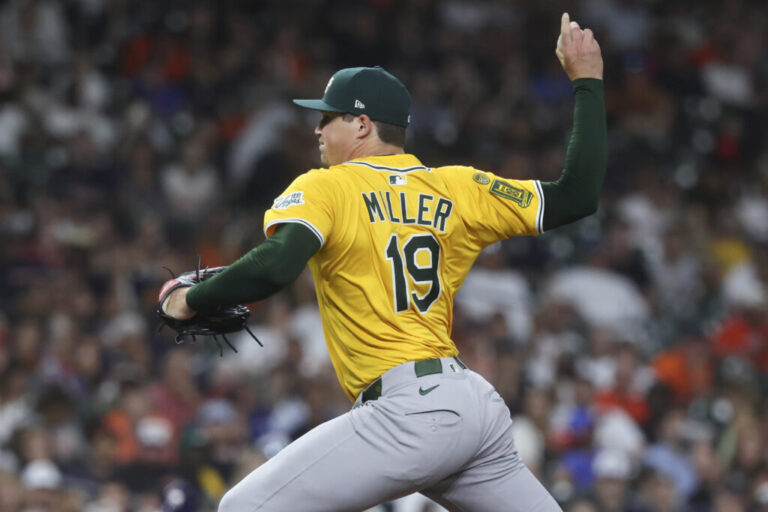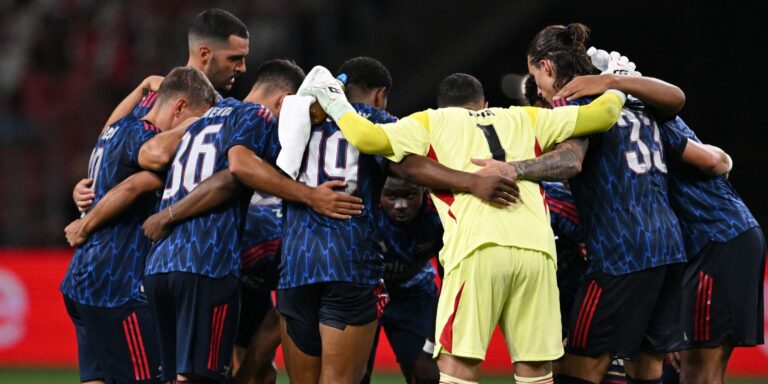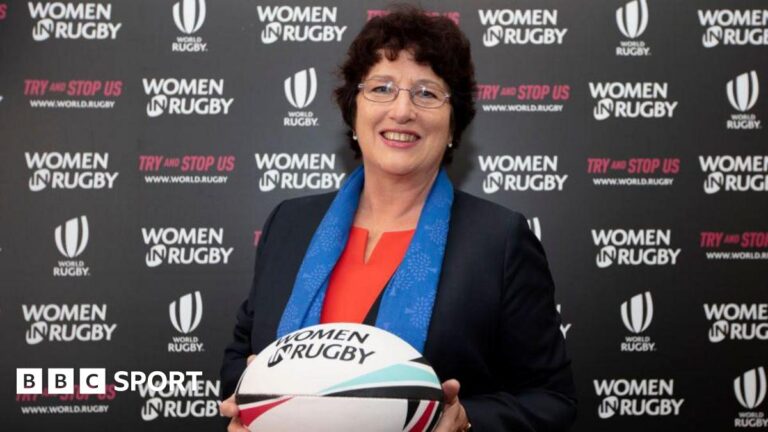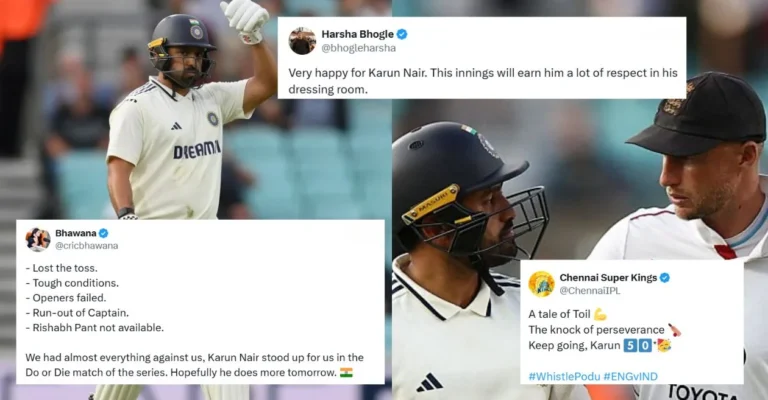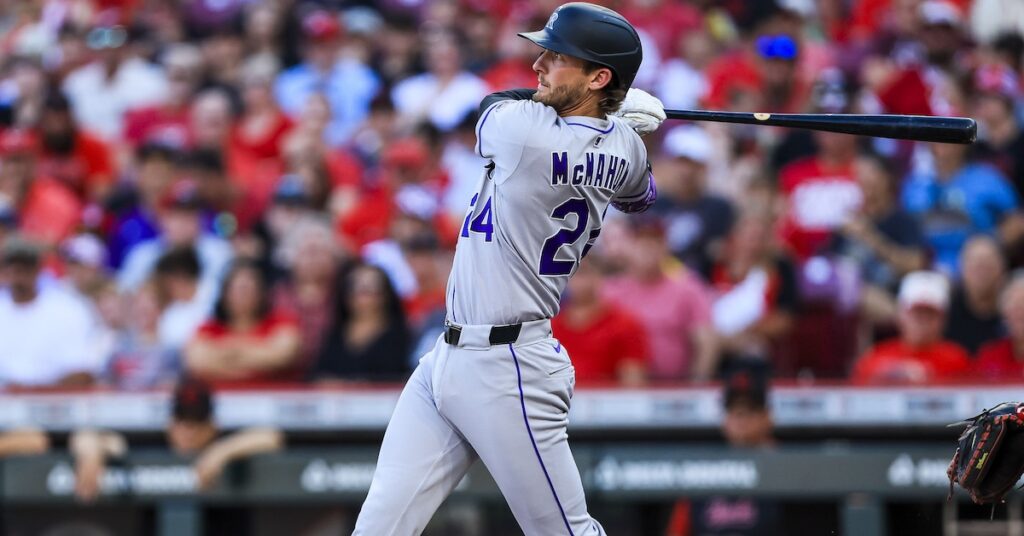

Sometimes you just can’t wait for the weekend. On Friday afternoon, the Rockies traded longtime third baseman Ryan McMahon to the Yankees in exchange for pitching prospects Griffin Herring and Josh Grosz. MLB.com’s Mark Feinsand first reported the deal, while Jorge Castillo of ESPN was first to report Herring’s inclusion and Bob Nightengale of USA Today was first to name Grosz.
McMahon was drafted by Colorado in 2013 and has spent his entire nine-year career with the Rockies; he ranks ninth in franchise history in games played. He is in the fourth year of a six-year, $70 million extension, and the Yankees will take on the rest of his remaining contract. He is owed a tad less than $4.2 million this season, and $16 million a year in both 2026 and 2027. At the time of the trade, the Yankees have an 88.8% chance of making the playoffs, but they’re 4 1/2 games back of the Blue Jays in the AL East after dropping two of three in Toronto earlier this week. New York could use a boost, and to say that McMahon has the potential to fill a position of need would be an understatement.
When Jay Jaffe wrote up the Yankees’ third base situation in his Replacement-Level Killers Series, he led off by saying, “Areas of need don’t get more apparent than this.” Oswald Peraza has spent more games at third than any other Yankee, and amazingly, his season wRC+ of 24 drops to 10 if you just look at his time as a third baseman. Jazz Chisholm Jr. hit like crazy while spending the month of June at third base, but he’s now back at second, where he started the season. The Yankees released DJ LeMahieu a few weeks ago. Oswaldo Cabrera has an 83 wRC+ and suffered an ankle injury in May that will keep him out until at least late September. Jorbit Vivas is batting .164 over his first 65 major league plate appearances.
Put it all together, and the Yankees have received just 0.6 WAR from the third base position, which ranks 23rd in baseball (though it does put them ahead of fellow playoff contenders the Phillies and Cubs). If you discount Chisholm’s time at third, New York would fall all the way to -0.7. This is a team in dire need of an upgrade. That said, the Yankees are not getting Eugenio Suárez. Let me hit you with a post from former FanGraphs editor Jon Tayler:

Jon left out McMahon’s typically great defense, which has pushed him to 1.4 WAR, but his point is still clear. McMahon hasn’t hit much better than the Yankees third basemen this season. It’s surprising, but in eight full major league seasons, McMahon has never once put up even a league-average batting line. He hits the ball hard and takes his walks, but he’s striking out nearly 32% of the time and he’s never surpassed 24 home runs in a season. His best year came in 2022, when he ran a wRC+ of 97 and put up 3.1 WAR. Clearly, the Yankees see the potential for more, so let’s talk reasons for optimism.
We have to start with exit velocity. McMahon has always hit the ball hard, but he’s ascended to a new plane this season. He’s tied for sixth among all qualified hitters in average exit velocity. The only players ahead of him are Oneil Cruz, Aaron Judge, Shohei Ohtani, Kyle Schwarber, and Juan Soto. This is rarefied air (in rarefied air). McMahon’s 90th-percentile exit velocity is roughly the same as it’s been for the last few years, but even if he hasn’t accessed an entirely new gear of top-end power, it’s surprising that all that extra hard contact hasn’t resulted in increased production. He’s running career highs in barrel rate, pulled air ball rate, and launch angle on hard-hit balls. That’s not usually a recipe for a career-high 63-point gap between your expected slugging percentage (.466) and your actual slugging percentage (.403).
McMahon also has the best xwOBA (.343) and best DRC+ (93) of his career. His luck should change at some point. Moreover, a left-handed hitter who just raised his pulled air ball rate from 11.1% to 18.8% seems likely to do pretty well in Yankee Stadium. Leaving Coors Field may hurt, but at the risk of being cynical, heading to a different organization and new coaching staff is probably going to help. The situation isn’t exactly analogous, but I’d refer you to Chisholm, who ran a 102 wRC+ with the Marlins and so far is at 135 with the Yankees. For that matter, LeMahieu represents another former Rockie who joined the Yankees at the age of 30 and immediately blossomed at the plate.
Over the course of his career, McMahon has real platoon splits. He’s got a 95 wRC+ against righties, compared to 75 against lefties. This season, he’s all the way down to 58 against lefties. However, if any team can absorb that issue, it’s the Yankees, whose 120 wRC+ against lefties is the best in baseball. Manager Aaron Boone expressed excitement about McMahon during his pregame press conference on Friday. “I know there’s real offensive potential in there,” he said. “I know he’s had offensive success, as well as some struggles there over the last calendar year too. It seems like over the last month, he’s really started to swing the bat like he’s capable of. Because he can impact the ball, he can control the strike zone. He’s had some swing-and-miss that probably hurt him a little bit, but then he can really defend over there. Just the handful of times that we’ve played against them that I watch him, you’re like, ‘That’s what it should look like over there.’”
Boone’s estimation of McMahon over the last month is not quite accurate, though the third baseman has been swinging a hot bat over the last two weeks. In nine games since July 11, he has a 197 wRC+ across 36 plate appearances. From June 25-July 9, the previous two weeks, McMahon had a -27 wRC+ over 14 games and 51 plate appearances.
For the rest of the season, McMahon has a pretty low bar to clear to represent an improvement. If all he does is keep playing the way he has on both sides of the ball, he’ll be better than what the Yankees would otherwise have gotten at third. If his luck changes and a few more of those hard-hit balls find grass (or the short porch), all of sudden, he’s up around league average at the plate and a massive upgrade for New York. If the Yankees can help him to make the most of his pull power, he could be a difference-maker going forward. McMahon has put up 10.7 WAR since 2021, making him a reliably healthy, reliably slightly above-average third baseman, and he’s under contract through 2027.
As for the Rockies’ portion of the trade, dealing a favorite like McMahon with two and a half years left on his contract signals a real departure. As Darragh McDonald noted at MLB Trade Rumors, the Rockies are fond of extending less-productive homegrown players, and have also let players like Trevor Story and Jon Gray walk in free agency rather than trading them at the deadline. It may be an acknowledgement of just how deep a hole the team has dug for itself.
This is the first time we’ve written about either Herring or Grosz here at FanGraphs, so after this paragraph, everything you read was written by Eric Longenhagen. The Yankees drafted the left-handed Herring out of LSU in the sixth round in 2024, and Eric currently has a future value of 40 on him. The 22-year-old has been dominant in his first professional season, and according to MLB Pipeline, he slots in as the team’s fifth-ranked prospect. Josh Grosz, who is also 22, jumps to the very top of the list of players most likely to be confused with Josh Sborz. The Yankees drafted the righty Grosz out of East Carolina in the 11th round in 2023, and although his results have been varied so far as a professional, he’s running a 3.38 FIP in High-A and striking out nearly 10 batters per nine innings. Eric has a future value of 35+ on him. With that, here are Eric’s breakdowns:
Griffin Herring
Herring spent two years as LSU’s most consistent long reliever (working as many as five innings) and was a draft-eligible sophomore in 2024. The Yankees made multiple changes to his delivery and pitch usage, which helped him dominate Low-A and earn a promotion after just eight starts. He had a 1.71 ERA combined at both levels at the time of the trade, though his K% dipped quite a bit after he was moved up to Hudson Valley. Herring’s fastball only averages about 90 mph but lives off deception and riding life. Since turning pro, his arm slot has been raised, but his stride down the mound has gotten bigger and longer, and his extension was just shy of seven feet at the time of the trade.
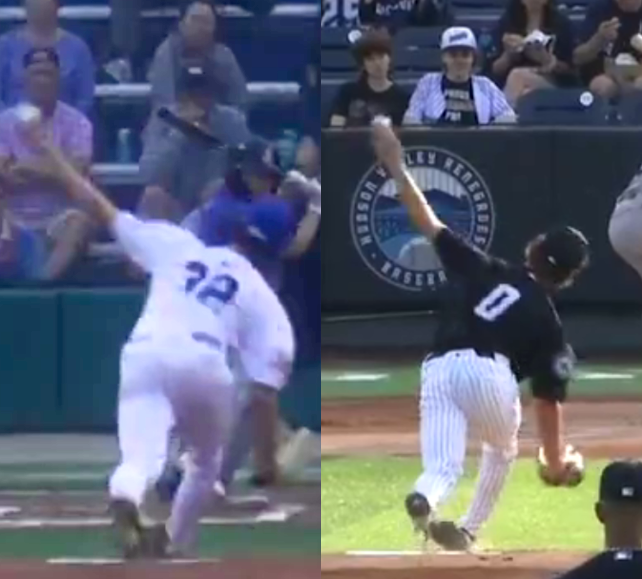
His loose, whippy arm action prevents hitters from seeing the baseball until release, and despite lacking anything close to MLB average fastball velocity, Herring’s heater has generated above-average chase-and-miss so far this year. With the Yankees, Herring also emphasized the use of his slider, which has become his most-deployed pitch. It ranged from 80-85 mph in his final Yankee outing prior to the deal, and has tight late movement but lacks huge depth. It’s playing like an above-average pitch in pro ball. Herring didn’t really have a changeup in college, but he’s added one as a pro and is throwing it about 14% of the time. His feel for it isn’t bad considering he’s just begun using it, but it often cuts on him or finishes too high. A smooth on-mound operator, Herring looks the part of a starter even though he isn’t especially physical because of his mechanical grace. It’s impressive that he’s maintained his excellent college strike-throwing even though his delivery has been changed, and he projects as a high-floor backend starter.
Josh Grosz
Grosz started for the better part of his last two years at ECU, and though his strike-throwing backed up during his draft spring, he still entered pro ball with a shot to start based on the depth of his repertoire and the deceptive cadence of his delivery. This is a pitcher with bad fastball shape, but the jerky cadence and short actions of Grosz’s delivery make him tough for hitters to time. He’s added about a tick and a half of velo to his fastball since turning pro, though this appears to be more a result of strength training than due to a mechanical overhaul. Grosz sits 92-95 with equal parts rise and run, effectively giving him a sinker from his three-quarters arm slot. His slider is hard, 83-86 mph on average, and lives on the glove side half of the plate as more of a flinch-inducing, strike-getting pitch than a nasty bat-misser. The biggest change for Grosz in pro ball has been the makeup and usage of his changeup. It looks like Grosz is using a splinker-style grip, and it has more consistent sink now than when he was in college, though it still is mostly a tailing pitch. This is generating the most consistent chase-and-miss of Grosz’s three pitches, even though it’s his first year of using it regularly. Without a plus offering, he looks like a consistent, low-variance depth starter.
Associate editor Matt Martell contributed reporting to this article.
